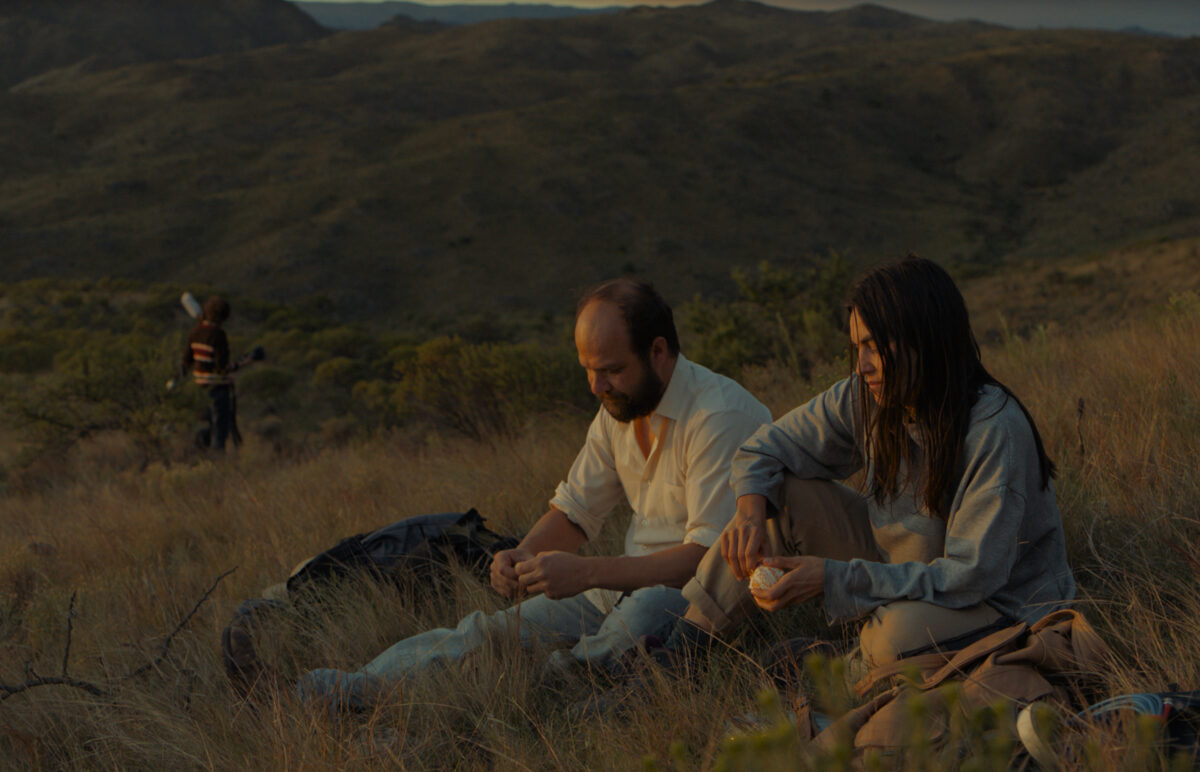It might be apt, in the case of Rodrigo Moreno’s Los delincuentes, to begin with a deceptively simple plot summary, in any case the least important aspect of the film. Morán, a beleaguered employee at a Buenos Aires bank, pulls off a low-key heist and manages to walk away with a decent sum. The masterplan? Morán wants his colleague Román to hold the money for him, while he serves a quick three-year jail sentence, after which both will finally be freed from the self-imposed drudgery of their lives.
And yet, like most things in Los delincuentes, the plot functions only on an ostensible level. Rather, what does structure the film—its organizing principle, so to speak—is a mystifying series of repetitions, ruptures and narrative jumps. At the heart of Los delincuentes is a doubling effect: starting off with the matching signatures of two bank clients, it gradually hairpins its way around to encompass events, actions, characters, and finally the film itself.
One third into its three-hour plus runtime, Román, while traveling to the Cordoba Hills to stash away the stolen money, falls for a local woman named Norma, who it turns out lives in the countryside with her sister Morna and her filmmaker boyfriend Ramon, each name here anagrammatically linked to the others. In a sudden genre shift, the film now assumes the guise of a languorous love story, in a sense discarding everything that had come before it. Gradually, more and more narrative ‘inconsistencies’ pop up: there are character doublings (Roman’s boss at the bank and the local prison gang leader are played by the same actor), bizarre and ludic plot twists (like Román, Morán too seems to have met and fallen in love with Norma), and extreme time dilations (Román’s apparent three day trip takes up almost an hour of the film’s runtime, during which Morán somehow manages to near the end of his prison sentence).
It would not be wholly incongruent to think of Delincuentes as a film primarily made up of digressions which moves ahead only to fold back upon itself. There are indications of a Rivettean mystery afoot (maybe even an ontological one), but then again—and this may be one of the supreme achievements of Delincuentes—one can never quite be certain about anything.
Moreno’s formal choices equally complement the digressive nature of the film; often the camera, while in the middle of a conversation, suddenly ventures forth in an unmotivated pan or tilt, capturing—in continuous motion—buildings, landscapes, and the general hustle-bustle of the city. One gets the impression of the off-screen world constantly intruding into the narrative event; everything is seemingly sutured to everything else, though the actual connections remain willfully obscure, to be intuitively felt rather than rationally understood. Editing choices—split screen shots, slow dissolves, superimpositions—further juxtapose unrelated events, giving rise to a vision of reality playfully coming apart at the seams.
Both thematically and formally, Los delincuentes could be said to belong to a new crop of Argentine films that have recently been making splashes in the art-house circuit (two well-known examples would be Mariano Llinás’ thirteen-hour La flor and Laura Citarella’s four-hour Trenque Lauquen). Labyrinthine, elliptical, endlessly self-reflexive, and with mammoth running times, these films stretch the boundaries of conventional narrative structure, while also reveling in the sheer euphoria of storytelling (their cultural inspirations include not just cinema but also innovative writers like Cortazar and Borges). A particularly evocative episode from Delincuentes is emblematic of this shift: while sharing a meal with Norma, Morna, and Ramon, Román is quite inexplicably reminded of a childhood memory, a half-remembered sentence: “There were three, two Poles and a French.” What does it mean? Was it a riddle, a game, or maybe even a song? Pat comes the droll reply: why can’t we make up the answer, and treat it as one of life’s eternal mysteries? Indeed, to follow the film’s unpredictable flight is to give oneself over to the spontaneous rhythms of life, some of which we may never know or fully comprehend.
In a film so resolutely concerned with themes of imagination and memory, it perhaps comes as no surprise that there are also allusions to cinema, both the act of filmmaking and of film-watching. The first revolves around the filmmaker boyfriend Ramon, who is attempting to make a video-film on gardens. In yet another disarmingly gentle story-within-a-story digression, Morán—in a flashback sequence temporally out of joint with the rest of the film—becomes embroiled in their filmmaking adventures, and before long finds himself traipsing through idyllic surroundings with a sound recorder in hand. The second instance concerns Román and Norma’s tryst in a Buenos Aires cinema hall playing Bresson’s L’Argent. There is a thematic connection—money constantly changes hands in Delincuentes—but also a formal one: Moreno chooses to end the theatre sequence with a proverbial Bressonian image, that of hands tenderly clasped together. It is life mimicking cinema, and cinema mimicking life, ad infinitum.
